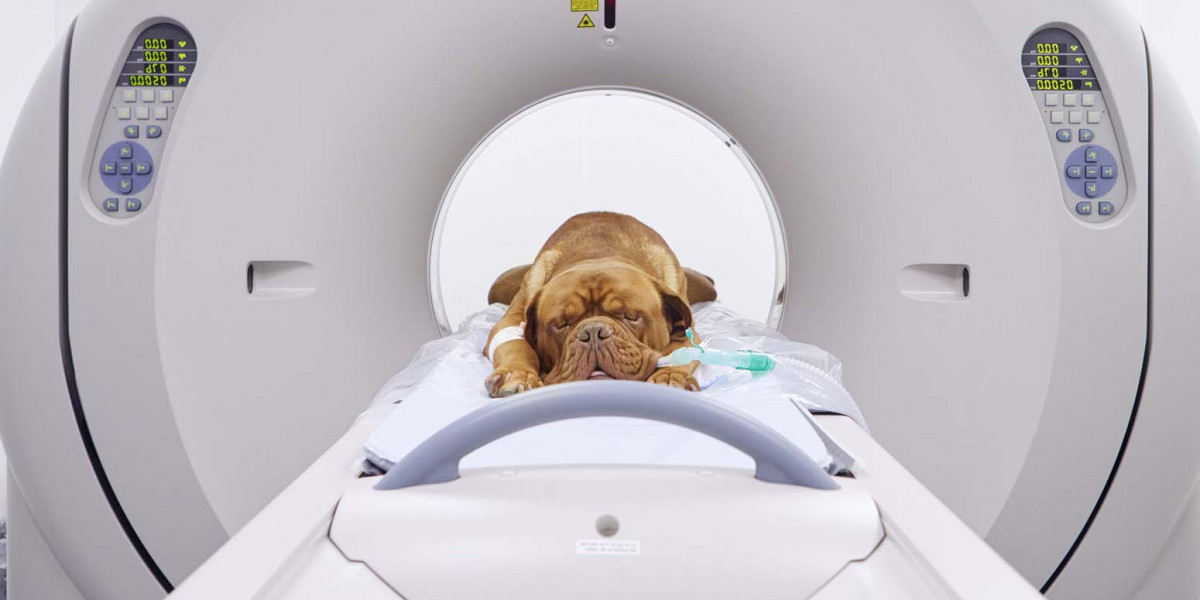The veterinary MRI systems market has seen significant evolution in recent years, driven by increasing pet adoption, rising expenditure on animal healthcare, and growing awareness of advanced diagnostic techniques. Magnetic Resonance Imaging (MRI) technology, once confined to human diagnostics, is now becoming an integral part of veterinary healthcare due to its non-invasive and highly detailed imaging capabilities.
As the veterinary healthcare sector grows, so does the demand for more precise and efficient diagnostic tools. MRI systems are especially useful in identifying neurological conditions, musculoskeletal injuries, and soft tissue abnormalities in animals. The surge in chronic diseases among companion animals such as dogs and cats further accelerates the demand for sophisticated imaging solutions.
Competitive Landscape Overview
The veterinary MRI systems market is moderately fragmented, with the presence of both established players and new entrants. Companies are competing based on technological innovations, price differentiation, system portability, and post-sales service support. Leading players in the market include Esaote SpA, Hallmarq Veterinary Imaging Ltd, GE Healthcare, Siemens Healthineers, and Canon Medical Systems Corporation.
Esaote SpA has maintained a strong position due to its specialization in dedicated MRI systems for veterinary use. Their compact and cost-effective solutions cater specifically to small animal practices, making them highly attractive to clinics with limited space or budget constraints.
Hallmarq Veterinary Imaging Ltd, a pioneer in the field, has built a solid reputation by offering the world’s only MRI system designed specifically for standing equine imaging. This unique capability gives them a competitive edge in the equine segment, a niche but significant area within veterinary imaging.
GE Healthcare and Siemens Healthineers, while traditionally dominant in the human imaging market, are expanding their footprint in the veterinary sector by adapting their systems for animal use and leveraging their extensive R&D and distribution networks. Their MRI systems offer high-end features such as 3D imaging, faster scan times, and AI-assisted diagnostics.
Canon Medical Systems Corporation is also focusing on compact MRI units suitable for small animal practices and offering scalable systems for multi-modality imaging. They are increasingly focusing on strategic collaborations with veterinary hospitals and universities to promote adoption.
Technological Trends Shaping Competition
One of the most significant competitive factors in the market is innovation. Portable and low-field MRI systems are gaining traction due to their cost-effectiveness and ease of installation in veterinary settings. Companies investing in these technologies are gaining a competitive advantage by targeting small to mid-sized clinics that cannot afford high-field, large-scale systems.
Another key trend is the integration of AI and machine learning for automated image interpretation. These features help reduce scan-to-diagnosis time, enhancing clinical efficiency and making MRI more accessible to veterinarians with limited imaging expertise.
Additionally, companies are focusing on developing species-specific imaging protocols and user-friendly software interfaces to enhance usability and diagnostic accuracy. These improvements are especially appealing to veterinary professionals seeking to reduce learning curves and improve patient throughput.
Strategic Moves and Market Dynamics
Mergers, acquisitions, and strategic partnerships are common strategies employed by companies to strengthen their market position. For example, collaborations between equipment manufacturers and veterinary teaching institutions have become a critical avenue for product testing, validation, and market penetration.
The pricing strategies also vary significantly across the competitive spectrum. While larger firms offer premium, high-performance MRI systems, smaller players often differentiate themselves by offering cost-effective alternatives that do not compromise on essential diagnostic capabilities. The presence of refurbished MRI systems in the market has added another layer of competition, catering to budget-conscious buyers, particularly in emerging markets.
Geographically, North America holds the largest share of the veterinary MRI systems market, followed by Europe and Asia-Pacific. The U.S. leads the pack with a well-established veterinary healthcare infrastructure and higher awareness levels. However, Asia-Pacific is witnessing the fastest growth due to rising pet ownership, improving veterinary services, and increased investment in animal health diagnostics.
Future Outlook
The competitive dynamics in the veterinary MRI systems market are expected to intensify as technology advances and demand for sophisticated veterinary care rises. Companies that can provide versatile, affordable, and AI-integrated MRI systems tailored to the needs of veterinary professionals will be better positioned to capture market share. Continued investment in R&D, expansion into emerging markets, and strategic collaborations will be key to sustaining competitive advantage in this evolving landscape.









